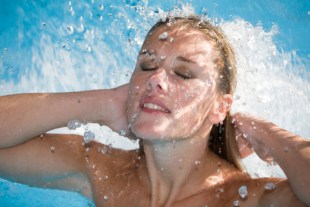What kinds of exfoliation treatments are available?
Even after damage is done, there is much we can do to restore some of the qualities of our youthful skin.
One of the most popular is skin resurfacing or dermabrasion, which removes damaged and disorganized outer layers of our skin and yields a ‘polished’ effect that is as much the result of better light reflectivity as it is of better skin quality.
This is usually achieved using a laser on the skin in short bursts, then allowing the skin to restore itself in a healthy way. This can be performed all at once, although better results are achieved by treating a small percentage of our skin’s surface each time (called fractional resurfacing), so healing is quicker and we experience less downtime. Non-ablative lasers can also be used to reduce background skin redness, blotchy patches or the appearance of dilated or swollen blood vessels (erroneously referred to as ‘broken’ capillaries).
Microdermabrasion is a more gentle technique that removes only the outer layer of dead cells. This can be achieved by sanding the surface of the skin with crystals or a similarly abrasive surface.
Shedding and regeneration of the outer layers of the skin can also be achieved with a chemical peel. Some of the most common exfoliants include alpha hydroxyl-acids (AHAs), derived from sugarcane or fruit, and polyhydroxic acids (PHAs).
These clear the dead skin cells and stimulate collagen renewal and GAG synthesis. The net result is an appreciable reduction in the appearance of wrinkles and a reduction in signs of photo-aging.
Getting the most from exfoliants
- The right dose:
Most over-the-counter AHA products contain concentrations of 8-15%. Products with concentrations lower than 8% do not result in significant benefits. Higher concentrations (25-50%) are more abrasive and should be administered under the supervision of a dermatologist.
- The right formulation:
The response to products will be different in different individuals. It is worth trying a range to find what works for you. Older formulations, such as ‘Jessner’s solution’, which relies on a combination of ingredients, still produce some of the best results, with a low incidence of side-effects.
- The right application:
Whilst removing the top layer of dead skin cells does produce an ‘anti-wrinkle’ effect, it also removes valuable antioxidants, particularly Vitamins C and E, from the skin and increases sensitivity to sunlight. These side-effects can be minimized by applying exfoliants at night after cleansing your skin, then applying an antioxidant-rich moisturizer. Upon waking, wash your face and neck to clear away dead skin cells, and then apply a moisturizer and sunscreen. Use exfoliants for six to 12 weeks at a time, and then give your skin a chance to recover and become less sun-sensitive.
- The right combination:
Don’t use skin products containing AHAs or PHAs at the same time as using retinoic acid, as this may further increase your skin’s sensitivity to the sun. For best results, alternate their use with products incorporating AHAs or PHAs on a monthly or six-weekly basis.
Last Reviewed 02/Mar/2014
Dr Merlin Thomas
Latest posts by Dr Merlin Thomas (see all)
- How to increase DHEA levels - 28/09/17
- Testosterone supplement benefits & risks - 11/07/17
- Health effects of tea & coffee - 10/07/17







